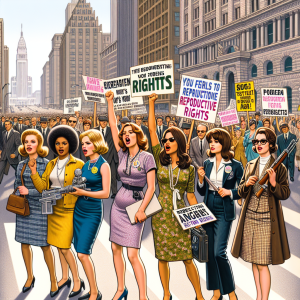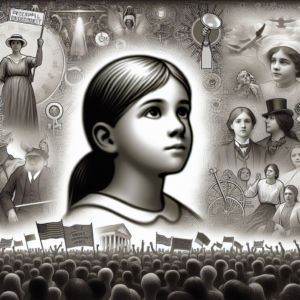#FutureGirls
The Emergence of a Movement: The Quest for Gender Equality
The 1960s marked a period of significant social upheaval in the United States, a time when various movements sought to challenge and reshape American society’s core dynamics. Central to these were the efforts of the women’s rights movement, which emerged as a beacon for countless women striving for equality and liberation from repressive societal standards. This era saw numerous landmark protests and actions that not merely questioned existing paradigms but also profoundly influenced the gender equality movement.
A Spark Is Lit: The 1968 Miss America Protest
On September 7, 1968, Atlantic City witnessed a pivotal event in the women’s liberation movement as the Miss America Pageant, a bastion of traditional beauty norms, faced opposition from activists challenging the societal expectations placed on women’s physical appearances. These protesters, adorned with “Women’s Liberation” sashes and carrying placards demanding equality, converged on the boardwalk outside the Convention Hall, setting off a wave of activism that would resonate far and wide.
“The pageant represented not merely a competition; it symbolized the prison of societal roles forced upon women,” – Gloria Steinem.
One notable act of defiance was the “Freedom Trash Can,” where women discarded items they believed represented the oppression of women, including bras, heels, magazines, and makeup. This act coined the term “bra burners,” albeit inaccurately, yet aptly capturing the essence of rebellion and the longing for emancipation from societal norms.
Advancing Together: The 1970 Women’s Strike for Equality
On August 26, 1970, the 50th anniversary of the 19th Amendment, which afforded women the right to vote, was commemorated by the Women’s Strike for Equality. This event, orchestrated by the National Organization for Women (NOW), saw approximately 50,000 participants advocating for equal employment opportunities, the legalization of abortion, and free childcare in marches nationwide. This significant display of solidarity and resolve underscored the momentum of the women’s liberation movement, propelling gender inequality and women’s rights issues into the national discourse.
Overcoming Obstacles: Progress in Education and the Workplace
The 1960s also bore witness to critical advancements in dismantling the barriers to women’s education and employment. Inspired by the civil rights movement, women’s rights advocates employed non-violent protests, legal challenges, and lobbying to confront discriminatory practices.
A crucial victory was achieved with the enactment of Title IX in 1972, a part of the Education Amendments, which banned sex discrimination in any federally-funded educational program or activity. This pivotal law expanded academic and professional opportunities for women and girls, transforming the landscape of higher education and the job market in the U.S.
In employment, the Equal Pay Act of 1963 sought to eliminate wage discrimination based on sex. Despite initial limitations, it established a foundation for ongoing advocacy and legal reform aimed at securing equal remuneration for comparable work.
The Echo of Defiance: A Heritage of Protest
The protests of the 1960s transcended their immediate goals, sparking a worldwide dialogue about women’s societal roles and rights. The bravery and tenacity of the activists of this era inspired future generations to persist in the fight for equality, challenging remaining barriers.
“Through the crucible of protest, women discovered a united strength that surpassed boundaries, setting the stage for a reality where gender equality is not merely an aspiration but a right,” – Nada Al-Ahdal @nadalahdal
This legacy of defiance and the historic protests of the past serve as powerful reminders of the impact of collective action and the continuous struggle for justice and equality. Reflecting on the triumphs of the 1960s women’s rights movement, we are reminded of the enduring fight for a society where gender does not dictate one’s freedoms or opportunities.
Conclusion: The Enduring Flame
The 1960s women’s rights protests were more than symbolic gestures against societal norms; they were a battle for fundamental rights. These actions have significantly shaped women’s lives today and remain a source of inspiration for activists globally.
As we forge ahead, it’s vital to honor the past and the sacrifices of those who fought for gender equality. The legacy of the 1960s “bra burners” and pioneers continues to inspire, lighting the way toward a more equitable and just society for everyone.
#NadaFoundation
#NadaAlahdal
#Nada_Foundation
#Bra #Burners #Barrier #Breakers #Iconic #Protests #1960s #Womens #Rights #Movement
bra-burners-and-barrier-breakers-the-iconic-protests-of-the-1960s-womens-rights-movement





















